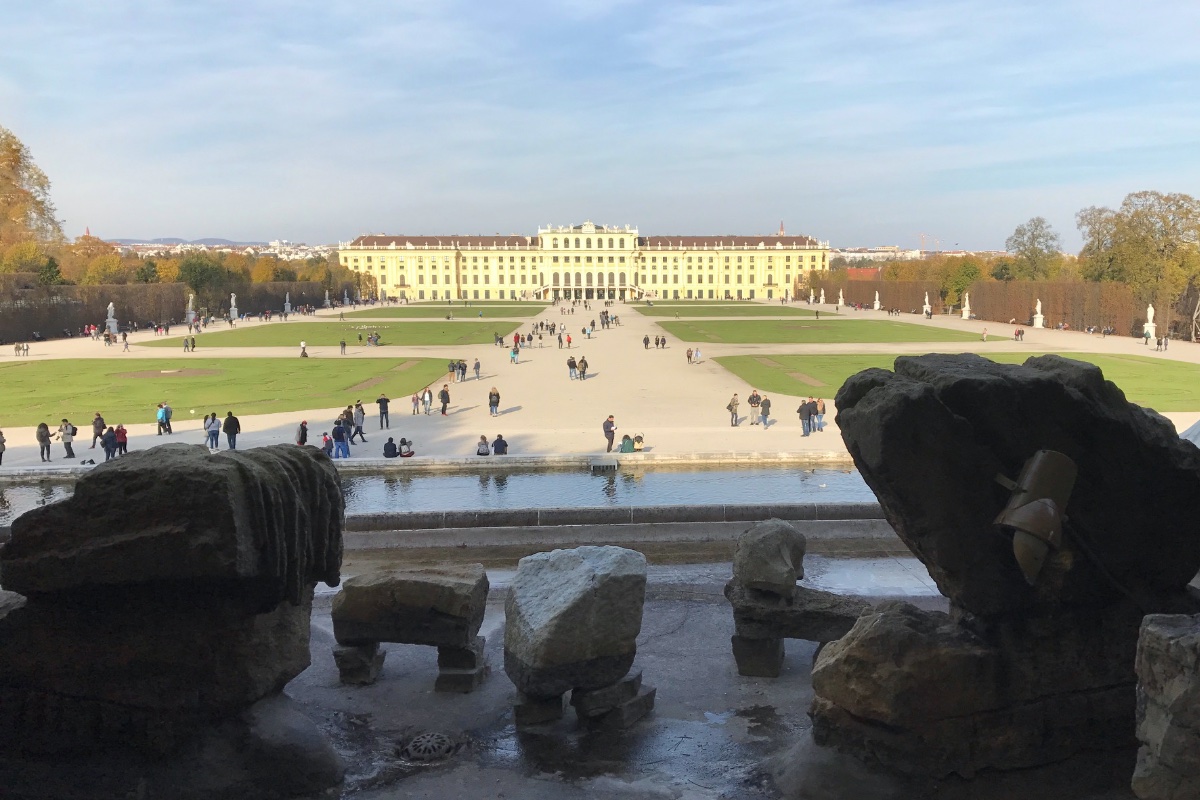Research Stay of Julius Schmalz

| Visiting period: | mid-November to mid-December 2017 |
| Visiting institution: | Institute of Mechanics and Mechatronics of the Vienna University of Technology, Austria |
| Visiting scientists: | Prof. Kaltenbacher |
From mid-November to mid-December 2017, I spent my research stay abroad in Vienna, Austria, where I had the opportunity to work at the Institute of Mechanics and Mechatronics of the Vienna University of Technology in the group of Prof. Kaltenbacher focusing on technical acoustics [1]. The group has a lot of experience in modelling and optimization of MEMS speakers, acoustic insulation, e.g. in the automotive area, and multi-physic systems such as surface acoustic wave (SAW) sensors. They are well experienced in developing FEM models due to their development of their own Finite Element simulation tool CFS++ (Coupled Field Simulation). The exchange was very helpful to validate my complex SAW model with anisotropic material properties. The group provided access to their FEM tool and supported me in transferring my existing COMSOL SAW model to CFS++, so that I was able to confirm my COMSOL model. One of the main objectives was to verify the rotated anisotropic st-cut quartz material model. Different simulation tools are using various coordinate system definitions and the definition of the rotation angle of the crystal itself is inconsistent in the literature. Hence, it was very helpful to implement the tensor rotation in both FEM tools in order to approve the used orientation and tensor rotation implementation. A particular challenge was to implement perfectly matched layers (PML). These layers are necessary to prevent undesired reflections of the propagating mechanical waves at the model boundaries. During my stay, we expanded the PML implementation in their CFS++ to mechanical waves and my work resulted in a test case for that implementation. Besides research, I was able to find some time for sightseeing in Vienna, i.e. for famous Schönbrunn Palace, Belvedere Palace, Hofburg etc. In addition, I was included into group activities, i.e. visiting Christmas markets. I would like to thank Prof. Kaltenbacher for the opportunity to visit his work group and learn from their experience and Dr. Toth for his excellent support. I also would like to thank the German Research Foundation (DFG) for funding this research stay as part of the CRC 1261.
Julius Schmalz




